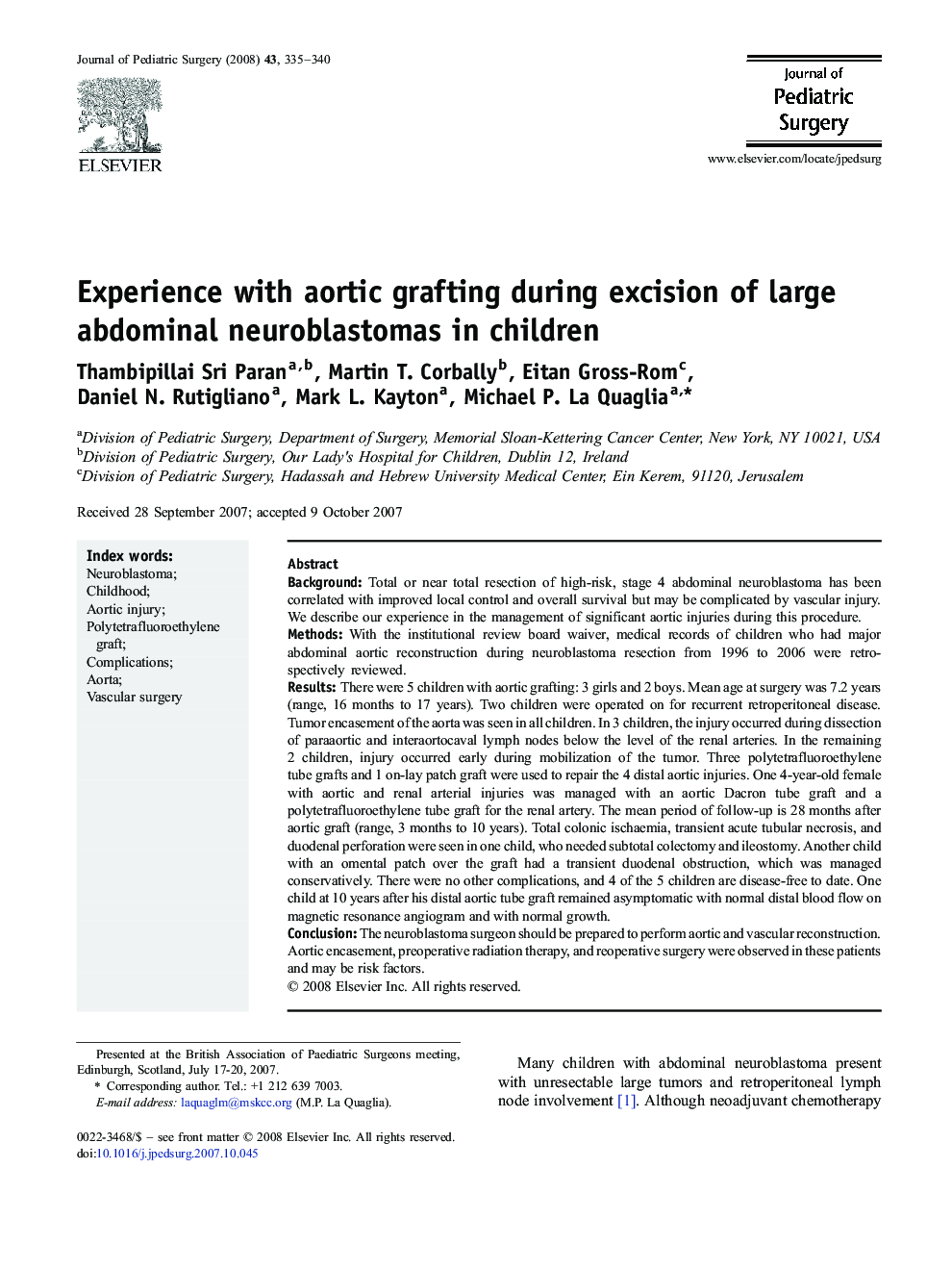| کد مقاله | کد نشریه | سال انتشار | مقاله انگلیسی | نسخه تمام متن |
|---|---|---|---|---|
| 4158955 | 1273819 | 2008 | 6 صفحه PDF | دانلود رایگان |

BackgroundTotal or near total resection of high-risk, stage 4 abdominal neuroblastoma has been correlated with improved local control and overall survival but may be complicated by vascular injury. We describe our experience in the management of significant aortic injuries during this procedure.MethodsWith the institutional review board waiver, medical records of children who had major abdominal aortic reconstruction during neuroblastoma resection from 1996 to 2006 were retrospectively reviewed.ResultsThere were 5 children with aortic grafting: 3 girls and 2 boys. Mean age at surgery was 7.2 years (range, 16 months to 17 years). Two children were operated on for recurrent retroperitoneal disease. Tumor encasement of the aorta was seen in all children. In 3 children, the injury occurred during dissection of paraaortic and interaortocaval lymph nodes below the level of the renal arteries. In the remaining 2 children, injury occurred early during mobilization of the tumor. Three polytetrafluoroethylene tube grafts and 1 on-lay patch graft were used to repair the 4 distal aortic injuries. One 4-year-old female with aortic and renal arterial injuries was managed with an aortic Dacron tube graft and a polytetrafluoroethylene tube graft for the renal artery. The mean period of follow-up is 28 months after aortic graft (range, 3 months to 10 years). Total colonic ischaemia, transient acute tubular necrosis, and duodenal perforation were seen in one child, who needed subtotal colectomy and ileostomy. Another child with an omental patch over the graft had a transient duodenal obstruction, which was managed conservatively. There were no other complications, and 4 of the 5 children are disease-free to date. One child at 10 years after his distal aortic tube graft remained asymptomatic with normal distal blood flow on magnetic resonance angiogram and with normal growth.ConclusionThe neuroblastoma surgeon should be prepared to perform aortic and vascular reconstruction. Aortic encasement, preoperative radiation therapy, and reoperative surgery were observed in these patients and may be risk factors.
Journal: Journal of Pediatric Surgery - Volume 43, Issue 2, February 2008, Pages 335–340